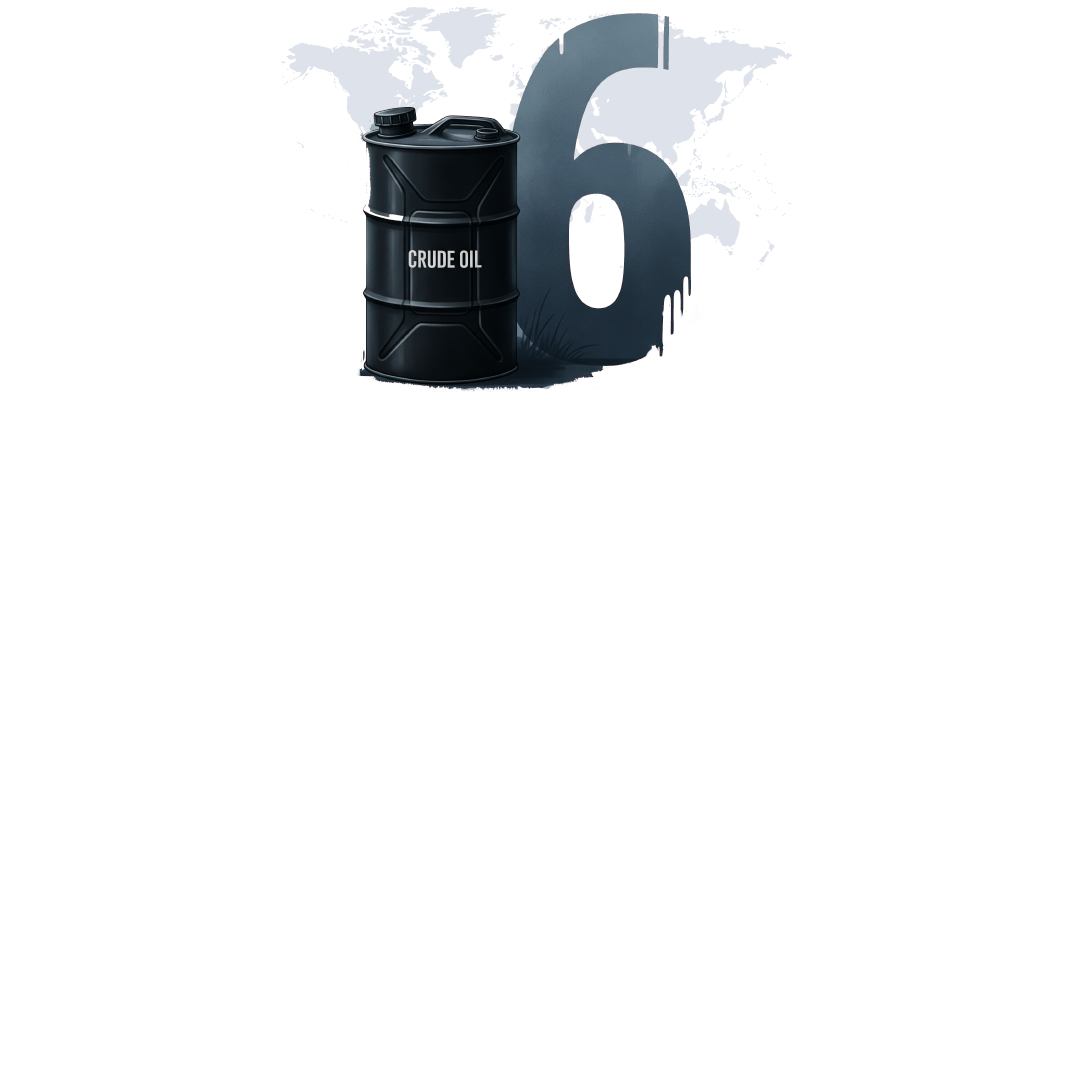Geopolitics, Crude Oil & MSMEs: 6 Practical Strategies to Tackle Cost Pressures
- Rising global crude oil prices directly increase input, transport, and packaging costs for MSMEs.
- India’s high oil import dependency and rupee depreciation amplify the financial strain on small businesses.
- Geopolitical tensions disrupt supply chains and delay imports, leading to costlier and slower operations.
- Higher inflation and tightening credit conditions make it harder for MSMEs to manage working capital.
- MSMEs can lower risks by optimizing fuel use, diversifying suppliers, and accessing targeted credit schemes.
- Government support, energy efficiency, and smarter logistics can help MSMEs build long-term resilience.
The month of June 2025 saw Brent crude prices surge by nearly 20% due to renewed tensions in the Middle East, particularly between Israel and Iran. While prices spiked past $87 per barrel at one point, they have since moderated due to record global supply, especially from the US and non-OPEC (Organization of the Petroleum Exporting Countries) producers. This temporary relief, however, does not eliminate the risks for Indian MSMEs, as the country imports over 85% of its crude oil. So, even short-lived price shocks can lead to currency volatility, increased logistics costs, and working capital stress. For MSMEs, many of which operate with tight margins and limited resources, the effects often last longer than the price increase itself. Rising costs, delayed payments, and inflation-related pressures continue to affect daily operations.
In this blog article, we explore how global geopolitical events are linked to oil price volatility (even if temporary), what these shifts mean for India’s economic landscape, and how MSMEs can strengthen their resilience during such uncertain times.
How Oil Prices Impact MSMEs
Crude oil prices are heavily influenced by global events. The sharp spike in Brent crude to over $77 per barrel in June 2025 is a recent example of how geopolitical risks, particularly in the Middle East, lead to immediate price jumps. These sudden spikes are often driven by fear premiums and trading algorithms reacting to headlines. Analysts estimate that such premiums can inflate prices by $5 to $15 per barrel even when actual supply is not disrupted.
While long-term forecasts suggest crude prices may stabilize around $66 by 2026, short-term volatility remains intense and unpredictable.
India’s Unique Vulnerability
India is among the world’s largest oil importers. With nearly 85% of its oil requirements fulfilled through imports, even a minor increase in global prices can significantly inflate the national oil bill, which is projected to reach $242 billion in FY25. This import dependency also weakens the rupee, increases the current account deficit, and puts pressure on inflation.
For MSMEs, the problem is two-fold. Even if the physical oil supply is not interrupted, the costs of doing business—such as shipping, packaging, and procurement—go up. This makes MSMEs especially vulnerable, as they rarely have the pricing power to pass on these costs to customers.
The Impact of Geopolitical and Macroeconomic Shocks on MSMEs
Geopolitical tensions are not limited to oil prices. They create a wide range of indirect problems for MSMEs, such as higher costs, payment delays, currency losses, and policy uncertainty. These shocks, when combined with macroeconomic effects like inflation and a weakening rupee, make day-to-day business operations more difficult and unpredictable.
- Input Cost Inflation
The most immediate impact of rising oil prices is seen in input costs. Crude oil is a critical component for transportation, manufacturing, and packaging, but its effect goes beyond logistics and travel. MSMEs in industries such as textiles, plastics, chemicals, engineering goods, construction materials, auto components, agro-processing, and small-scale manufacturing are directly impacted. Many of these sectors rely on petroleum-based inputs like synthetic fibers, plastic resins, lubricants, adhesives, and solvents. So, as fuel and energy become more expensive, the cost of raw materials, finished goods, and everyday production processes also increases sharply. According to estimates, for every $10 rise in crude oil, consumer price inflation (CPI) can go up by 1.7%. This not only raises MSME expenses but also reduces consumer spending, hurting demand for products and services.
While the Reserve Bank of India (RBI) has a target of keeping inflation around 4%, with oil prices rising and the rupee weakening, inflation may take time to ease, prompting the RBI to consider raising interest rates, making loans more expensive for small businesses.
- Working Capital Squeeze
Many MSMEs already face delayed customer payments and tight working capital cycles. With increased fuel and logistics expenses, their daily operating costs rise sharply. At the same time, uncertainty in the market often causes lenders to become cautious, tightening access to short-term credit. This leads to cash flow stress and impacts business continuity.
- Supply Chain Disruptions
Geopolitical tensions also impact global trade routes. For instance, conflicts in the Middle East or issues in the Red Sea or Suez Canal can delay shipments and increase freight charges. MSMEs relying on imported raw materials or machinery face longer lead times and price volatility, further complicating inventory and production planning.
- Currency Depreciation
The rupee has been steadily weakening, touching 85.78 against the US dollar in June 2025, down by 2.3% since January.
INR to US Dollar Exchange Rate From January 2025 to June 2025
| Month | Exchange Rate (INR to 1 USD) |
| January 2025 | 86.64 |
| February 2025 | 87.40 |
| March 2025 | 85.58 |
| April 2025 | 85.05 |
| May 2025 | 85.47 |
| June 2025 | 85.67 |
Source: Metropolitan Stock Exchange
Experts note that every $10 increase in oil can lead to a 1.5–2% fall in the rupee’s value. This makes all dollar-priced imports—including electronic components, tools, and industrial goods—more expensive for Indian MSMEs.
- Profitability Erosion
Rising costs and currency depreciation reduce profit margins. Since MSMEs typically cater to cost-sensitive markets, they cannot always increase product prices to balance rising expenses. As a result, profitability takes a hit, and business owners are forced to focus on staying afloat rather than planning for growth.
- Postponed Growth Opportunities
Due to cost pressures and uncertainty, many MSMEs put a hold on plans for expansion, marketing, or investing in R&D. While this helps reduce short-term expenses, it limits the business’s future competitiveness and long-term potential.
- Fiscal Trade-offs and Limited Relief
Higher oil imports increase the current account deficit (CAD), which currently stands at 0.8% of GDP. A growing CAD, coupled with a weaker rupee, reduces investor confidence and makes it more expensive for MSMEs to import essential machinery or raw materials. In short, a widening trade gap leads to a costlier and more volatile business environment.
To manage the impact of rising fuel prices, the government has spent heavily on subsidies; for example, ₹11,925 crore on LPG subsidies in FY25. However, this puts pressure on the overall fiscal deficit. MSMEs cannot rely on such relief measures in the long run, as the government may be forced to choose between controlling inflation and maintaining fiscal discipline. This creates an uncertain policy environment that makes financial planning difficult for small businesses.
How MSMEs Can Survive and Build Resilience
While external factors cannot be controlled, MSMEs can take several practical steps to reduce risk and improve business stability during uncertain times.
- Rework Logistics and Energy Use
MSMEs can reduce fuel costs and improve operational efficiency by rethinking how goods are moved and stored. Optimizing transport routes, consolidating shipments, and maintaining vehicles regularly can lower fuel consumption significantly. In addition to exploring electric vehicles, MSMEs should also evaluate other logistics solutions powered by renewable sources—such as solar-powered cold storage units, green warehouses, or logistics partners using CNG, biofuels, or hybrid fleets. Shared logistics platforms and multi-modal transport options can further reduce dependency on diesel and petrol while cutting delivery costs.
- Improve Working Capital Efficiency
Improving internal cash flow becomes critical during uncertain times. MSMEs can turn to formal working capital solutions such as business loans from RBI-registered NBFCs like Protium or financial institutions. Enforcing stricter payment terms, digitizing billing, and automating collections can also help reduce delays and improve liquidity.
- Diversify Inputs and Suppliers
Instead of relying on a single overseas supplier, MSMEs should explore alternative domestic or regional vendors. This helps reduce the risk of import delays and shields the business from global price swings. Diversification also improves bargaining power and business continuity.
- Hedge Against Volatility
While large companies often use hedging tools to protect against oil price fluctuations, MSMEs can explore simple versions of these tools through financial partners or aggregators. MSME clusters can negotiate forward contracts or fixed-price deals collectively, improving access to cost-management instruments.
- Tap Support Schemes Wisely
Several government schemes can help reduce financial stress. The Emergency Credit Line Guarantee Scheme (ECLGS) and Interest Subvention Schemes are useful for obtaining short-term capital. MSMEs should also explore incentives for technology upgrades, which can reduce energy usage and operating costs in the long run.
- Policy Engagement and Representation
MSME associations and industry bodies should actively engage with the government to advocate for targeted policy measures. These can include reductions in fuel-related duties, easier access to finance, and sector-specific relief packages. Strong representation ensures that the unique challenges of MSMEs are not overlooked in broader economic policymaking.
In this uncertain world, the strength of India’s small businesses lies in their adaptability. By taking proactive steps today, MSMEs can not only survive the current cost pressures but also lay the foundation for a more competitive and sustainable future.

